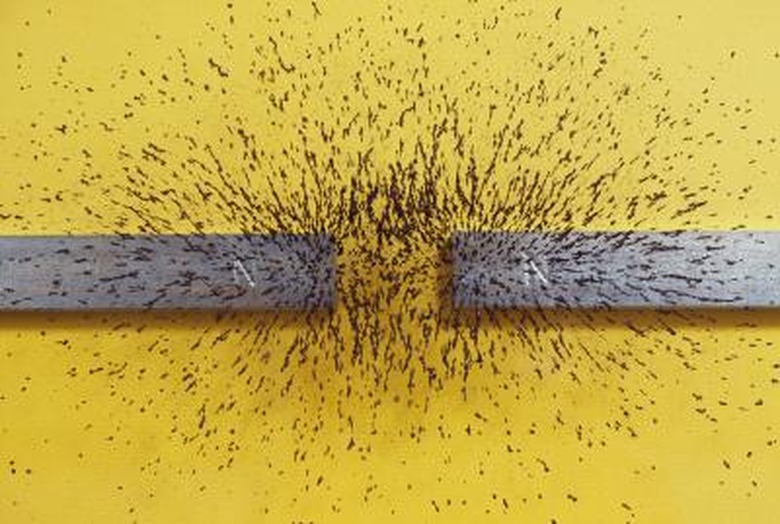What Are Bar Magnets Used For?
While magnets can came in many forms, bar magnets are always rectangular. They are dark gray or black and are commonly composed of alnico, a combination of aluminum, nickel and cobalt. Bar magnets are characterized by having a north and south pole on opposite ends of the bar.
Opposites Attract
Opposites Attract
The basic law of magnets is that opposites poles attract and like poles push back. You can demonstrate the law of magnetism by placing two bar magnets near each other. If they pull together the opposite poles are touching and if they push away the similarly charged poles are facing.
School Experiments
School Experiments
School children often learn about magnetic properties, such as which metals are magnetic, by conducting experiments with bar magnets. Bar magnets are commonly used because of their low cost, convenient size and ease of use.
Magnetize Objects
Magnetize Objects
Bar magnets can be used to magnetize other objects, such as paperclips. You magnetize the paperclip by stroking it against the bar magnet several times in one direction. You test it by bringing the magnet close to the paperclip: If the paperclip is attracted, it is not considered magnetic.
Industry
Industry
Industrial uses bar magnets for automation and the collection of loose metal materials. Bar magnets also are used to help other magnets retain their magnetism.
Compass
Compass
When a bar magnet is suspended, such as from a string, it will naturally align itself to the north pole, like a compass.
Cite This Article
MLA
Lauren, Daniella. "What Are Bar Magnets Used For?" sciencing.com, https://www.sciencing.com/bar-magnets-used-for-5612158/. 24 April 2017.
APA
Lauren, Daniella. (2017, April 24). What Are Bar Magnets Used For?. sciencing.com. Retrieved from https://www.sciencing.com/bar-magnets-used-for-5612158/
Chicago
Lauren, Daniella. What Are Bar Magnets Used For? last modified March 24, 2022. https://www.sciencing.com/bar-magnets-used-for-5612158/
